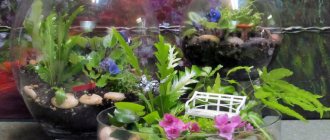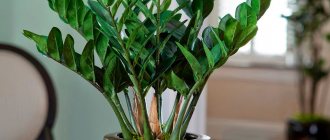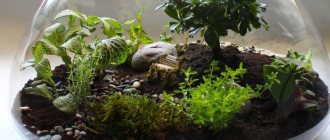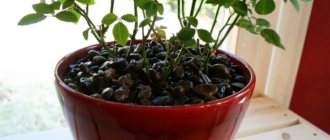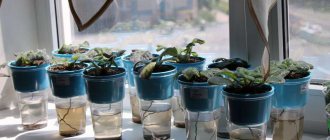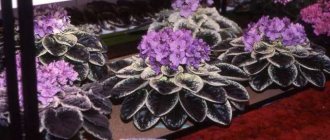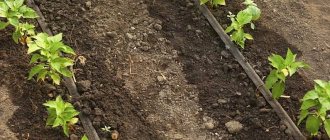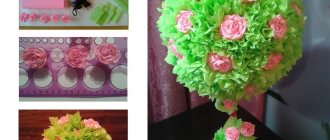Growing tropical plants in our houses and apartments is not so easy. Dry air just kills them, and if not, they don't look their best. Therefore, many people think about how to create suitable conditions for them. Unfortunately, not many people can boast of their own greenhouse or winter garden, but anyone can plant them under glass. We will talk further about how to make a florarium with your own hands. And don't be scared. You will need a little space, at least until the first experiment. Then the number of mini-gardens in the bank begins to grow catastrophically. But the problem with gifts has been solved, because the price of a ready-made garden in a bottle is quite immodest.
What is a florarium
Back in the mid-19th century, someone once came up with the idea of planting plants in a glass container. The experiment turned out to be very successful. The composition looked great, the plants developed and even bloomed. By analogy with aquariums and terrariums, such glass gardens began to be called “florariums”.
There is just a sea of ideas. This is just for starters...
Today, terrariums for flowers are made mainly in special glass or plastic vases, flasks and other containers. Succulents and moss are most often planted. There are people who like to grow tropical plants. They love high humidity, so a closed container is for them. Orchids and other plants that can grow without soil feel great in florariums. Since the containers are sealed, it is possible to create conditions for semi-aquatic and marsh plants, but this version of an aquarium garden is called a paludarium.
Sizes may not be small
If desired, you can buy a mini-garden in a vase. But making a florarium with your own hands is not so difficult, and it will bring much more joy. It may not be easy to find the right combination of soil components and matching plants, but there are some proven combinations. You can see them in the photo, but choosing them yourself is much more interesting.
What types of florariums are there?
There are several varieties of such products. Such designs are distinguished depending on the type of container, its shape, as well as depending on the theme and types of plants planted.
Let's consider the main ones:
Closed. The most common of this type are wall florariums. A special microclimate and a certain ecosystem are created inside the container. Most often, in this case, small containers are used, where the outlet hole is small. Despite the difficulty of caring for such a florarium (it is impossible to get to the plants), the vessels look very impressive and elegant. When the flowers are planted, the containers are tightly closed, so there is no influence from the external environment. Immediately the plants are well watered, and after clogging no further care is required. And it is simply impossible to implement it. Most often, decor is created inside in the form of a gravelly desert or volcanoes in which succulents of various types grow.
Open. They are convenient to use due to the presence of a special hole in them through which plants are cared for. However, because of it, the necessary microclimate cannot be created.
Mini florariums. One of the easiest to make. They can be created with children as a game. One or more similar plants are usually placed there. But, despite the small size, even in such containers you can create a real work of art by turning on your imagination.
Complex compositions. In this case, a wide variety of plant species are used. Chic compositions are created that can be arranged in ladders or tiers.
Hanging. They are made according to the same principle as all other varieties. The only difference is that you additionally need to come up with a mount. Most often such containers are hung near windows.
Round. They have a very beautiful view from all angles. That is why they are often placed in the most visible place, for example, in the center of the table. Many additionally attach a support and get hanging round containers.
Decorative. Such products involve the use of a variety of decorations. In addition to plants, multi-colored moss, pebbles, soil and many other elements are placed in the vessel to create a complete composition.
Flower terrariums. DIY geometric florarium
Containers for florariums
The sizes of florariums vary widely - from several hundred milliliters to tens and even hundreds of liters. The shapes are also very diverse, but balls and cylinders predominate. To make a florarium with your own hands, it is not necessary to buy a container. If you have an abandoned aquarium of any shape, a large jar or vase, you can use them. True, they must meet certain requirements:
- The container for florariums should help retain moisture. Balls or other containers with holes in the side are perfect for this. It’s a little worse if the hole is on top, but it is of a smaller diameter. Vessels that are even across the entire width are suitable for cacti and succulents. They don't need high humidity. But if you want, you can also plant a tropical plant. But in this case you will need a lid.
A mini-garden can be in the most ordinary jars. It is important that the glass is white and transparent - The height of the container must be sufficient to lay all the necessary layers of soil. Plus, you will need to plant the plants so that their height is taken into account. At least a third of the container should be free, and preferably half.
- The glass must be transparent, not colored. The walls must let in enough light.
An excellent container for a florarium: the humidity level is maintained, the walls are transparent, easy to care for.
For testing, you can make a florarium in a jar of an unusual shape or an inexpensive container. When you master all the intricacies, including the features of care, you will be able to build something more serious.
How to create a florarium with succulents with your own hands
To make a florarium from succulents with your own hands, follow the step-by-step instructions:
- A suitable glass vessel must be prepared. You can take an aquarium, a jar or a vase for succulents. The vessel must be intact and strong. You will also need suitable soil mixed with sand, as well as decorative elements: moss, small pebbles or other decor.
- Succulent containers should have drainage holes. Also, in addition to soil and sand, you need to prepare a small portion of drainage, which will end up at the bottom of the vessel. Usually small pebbles, pebbles or broken bricks are used as drainage. A drainage layer is placed at the bottom of the succulent terrarium, then a soil substrate mixed with sand.
- Place a flower in the soil and cover the uneven areas with soil. Lightly moisten the soil. It is important to ensure that the leaves of the succulents do not come into contact with the glass walls, otherwise the plant may dry out.
- Next, you can add decor in the form of pebbles and shells. The finished florarium can be placed in a lighted place, but in such a way that direct sunlight does not burn the plant.
What plants to plant
The choice of plants for a florarium is limited by the volume in which you plan to pack them. For beginners, it is best to start with succulents and cacti. Species diversity, different shapes and colors allow you to create different compositions. These plants do not grow too quickly and require minimal care.
Moss and succulents make very cute and varied compositions.
As a short-term project, you can make a florarium with early flowering bulbous plants. These are snowdrops (all types), tulips, hyacinths, etc. The time can be chosen so that by the appointed date (New Year, birthday, March 8, etc.) the flowers release buds or begin to bloom.
The simplest version of a garden in a vase is bulbous plants
When creating compositions, it is advisable to select the composition of plants not only by appearance. It is easier to care for a mini-garden in a vase if the plants have the same growing conditions. In this case, they can be planted in the ground. But if you are using "non-dwarf" sized plants, it is easier to remove from the pot. The pots are camouflaged with sand or decorative stones.
A similar technique - in separate pots - allows you to grow plants in one florarium that need to be cared for differently. But then you need to remember what, when and in what quantity to water, feed, etc. This is not acceptable for everyone, as it requires attention.
Plant selection
The compositions used in the aquarium include:
- Miniature ferns - thanks to their lace and lacy leaves, they look elegant and surprising.
- Moss vegetation - will help create soil cover, this could be bubble moss.
- Plaunk flowers - will create a green background and add volume.
- Orchids - will create exoticism and give a piece of the tropics. Orchids are capricious, and having organized a mini-garden with orchids (called an orchidarium), you will have to put a lot of effort into caring for it.
Succulents for the garden in a jar
Succulents are the most popular when creating florariums, and for good reason. They are usually easy to care for, small in size, do not grow too quickly, and look exotic and different. Moreover, even one type of succulent can differ significantly in appearance, be of different shapes and have different colors of “leaves”, different flowers, etc. Just keep in mind that they do not like high humidity, so when choosing a vase, choose one with a wide neck. And one more thing: they will need to be watered very rarely, and so that not the entire layer of soil/sand gets wet. It will be necessary to make a thick drainage layer, and use coarse sand with the addition of soil as soil.
Try making your first florarium from succulents and cacti
Haworthia
Does not bloom, but has decoratively colored lancet leaves. Undemanding to temperature and humidity conditions. Can be used in combination with more demanding plants. It does not like wet soil too much and can rot if moisture gets into the sockets.
Easy to care for Haworthia succulents
Aptenia
Flowering plant, small bright pink, lilac, white flowers. The leaves are fleshy and small. It is not too demanding on growing conditions and tolerates both high and low humidity.
Aptenia can be successfully grown in a vase
Monanthes
There is Monanthes in the form of a very small shrub, and there is a herbaceous one. Can create cushion-like dense clumps. The stems are erect with a leafy rosette at the top. Some species are in bloom. It is not too picky about temperature, does not like high humidity, but needs good lighting. A period of rest with a decrease in temperature in winter is desirable.
Small-sized plants are suitable for the smallest florariums
Piaranthus
It has a very unusual shape - the stems are creeping and consist of segments. Each segment has several “teeth”. Combined with its unusual coloring - various shades of green and brownish-green, and the star-shaped flowers - this plant will attract attention. Can be the center of a composition. The care requirements are low; you should only protect them from direct sunlight in the summer.
Unusual bright flowers and strange stems
Argyroderma
The very unusual shape of the plant, combined with the silvery tint of the leaves, gave rise to their popular name - living stones. The shape of the leaves resembles small pebbles (usually no more than 2 cm), from which a large and bright flower grows. It is generally undemanding in terms of conditions.
Flowering stones are an interesting addition to a glass garden
Conophytum
This type of succulent is also called living rock. The shapes of the leaves are even more strange and unusual. The flowers are very similar to daisies - bright and large. They have a clear growing season and dormancy. Vegetation usually occurs in winter, dormancy occurs in the summer months.
The shapes of the leaves are the most unusual. And these plants live on Earth?
Echeveria
This type of succulent is also called stone rose. Care is simple, just don’t touch the leaves with your hands. They are covered with a thin coating that wears off when touched. But since the florarium is an almost closed container, the likelihood of plaque damage is low. Another feature is that a rest period with a temperature of about 15°C is required.
The stone rose is not that unusual, but it looks great on rocks and sand.
Lithops
Lithops also look like stones that suddenly bloomed. They differ in that they can change the color of the leaves to match the color of the soil. They grow very well on rocky soil and can withstand high temperatures. They are similar in care to cacti, so they can be combined. They grow slowly and require bright light for normal development.
Another plant from another world
These are not all succulents and there are also no less interesting ones, but even these are enough to create a couple of thousand different compositions.
Mosses for florariums
Stabilized mosses are often used for florariums. This is ordinary moss, in which the water is replaced with a special solution, which, as it were, preserves the plant. It is not dry in appearance or to the touch, but all biological processes have stopped.
Moss can be the only plant in a mini-florarium
More common and easily accessible is Sphagnum moss; in florist shops you can buy a variety that is more suitable for the planned planting conditions. In general, “ordinary” moss can be found almost anywhere where there is enough moisture. In any case, near a well, in a storm drain, etc. Just pick up a certain amount, then place it on the soil, stones, etc.
This is sphagnum
You can grow moss specially - on stones and snags. It will take time, of course, but the result is worth it. If there are seeds, use them; if not, pick up any moss along with the soil in which it grows. Next, take kefir (preferably organic) or molasses, or whey (unpasteurized), add a nutrient medium. The simplest option is grated potatoes into porridge. Add moss to this mixture and mix everything in a blender. Using an old brush, apply to the places where the moss should take root. Since mini-gardens require microscopic doses, you can do without a mixer, just mix the composition well.
How to replace moss (ground cover plants)
Very similar to Nertera moss. It is also called coral moss, but it is simply a miniature herbaceous plant. It is interesting because, under favorable conditions, it is covered with bright orange, no less bright yellow or lilac/dark blue, purple, and white berries.
Coral moss or Nertera. This plant can be a decoration, but it is difficult to get berries to appear in a jar or ball
Selaginella Krausa and Selaginella Jory. These are compact tropical plants with a leaf height of 2-5 cm. They form dense cushions of bright greenery. They can successfully replace moss.
Two more plants that can replace moss in a florarium
Soleirolia. In nature, it forms small mounds about 5 cm high. The foliage is green, in different shades. Long thin shoots with very small leaves. In recent years, varieties with silver and golden foliage have been developed.
Tropics in the aquarium
Many consider florariums to be exclusively compositions with tropical plants or those that love high humidity. Since there is no clear terminology, this point of view cannot be called erroneous. In any case, this is also a mini-garden, but not in a glass or jar, but in a more or less large aquarium.
In a large space you can create more interesting compositions
When choosing plants for a florarium with tropical vegetation, the determining factor is the growing conditions. The second thing people pay attention to is the size to which an adult plant grows. Another point is the growth rate. The best choice is slow growing. Below is a list of plants that are recommended for such compositions.
- Rosette Fittonia (Verschaffelta, silver veined, dwarf species)
- ferns
- episcia
- Pilea
- royal begonia
- nephrolepis
- Cryptanthus bromeliads
- Pilea parvifolia
One of the most popular plants for growing in a florarium is Fittonia.
- nephrolepis
Air plants can live without any soil at all.
- ivies (Spetchley, variegated, Little Diamond, Tre Coupe)
You can create themed compositions
- violets
arrowroot
Each group has a large number of varieties that differ not only in color, but also in size. You can always select a group with similar care and growing conditions, and one that will not grow very quickly. Another option is plants that can tolerate frequent pruning. Or rather, they don’t react too negatively to them. In high humidity conditions this can become a problem.
Homemade florarium
Once you have decided on the composition of the plants, you can think about what soil to plant them in. The composition of the soil itself is selected according to the requirements of the plants. We can only discuss the composition for cacti and succulents: two parts of turf-clay soil, one part each of humus and river sand, you can add more brick chips. Before making a florarium, let's talk about the sequence of layers. You will need to stock up on sufficient materials.
The “assembly” itself takes a few minutes. But before making a florarium, you have to spend a lot of time selecting plants and determining the optimal soil composition
Creating a composition
Determining where to plant plants takes place in two stages. The first is when selecting plants. You imagine what and how it should look. There are several rules when creating a composition:
- If the florarium, garden in a jar or bottle is visible only from one side, we plant taller plants in the background. They can be placed along the back wall. Moreover, an uneven “relief” looks more interesting - plants of different shapes, colors and heights (if there are several of them).
Phalaenopsis are ideal candidates for growing in a glass or jar - If the composition should be viewed from all sides, the tallest plant is in the center, then to the edges - in descending order.
- In small compositions, the principle of the triangle is observed: one plant is tall, about a third of the space is occupied by a plantation of medium height, the rest is low-growing, ground cover.
- For small florariums with flowering plants, it is the flower that usually takes the lead. All other decoration only emphasizes its beauty.
When you have already bought all the plants, before planting, install them first in the soil already poured into the container. It may well turn out that something needs to be moved, swapped, or even removed. This should be done before you begin to remove the plants from the pots.
In pots or in the ground
As we said earlier, you can plant plants in a florarium directly in the ground, or you can leave them in pots. Each option has its own advantages. Plants in pots can be easily removed, moved, and replaced. In this case, minimal damage will be caused to neighboring plants. But then the composition of the soil is generally unimportant - you can simply fill the gap with pebbles, crushed stone, and decorate the top. This option is also good if the plants have different watering and feeding regimes. This can be done in pots.
The process of planting plants in a florarium
The advantage of planting in the ground is the creation of a unified ecosystem. If you decide to plant without pots, carefully remove the plants and remove as much soil from the roots as possible with your hands. Make a hole in the soil of the florarium (using a wire loop, a miniature spatula, or your hands). Size - so that the roots fit freely. You plant the plant, sprinkle it, compact the soil. When everything is planted, water it.
Soil layer by layer
In general, in most cases, the following sequence of layers for a garden in a vase/glass/jar is recommended:
- A layer of stones of the middle fraction. We are usually talking about pebbles - with rounded edges. The thickness of the layer is about 5 cm. The purpose of this layer is clear - excess moisture accumulates in it.
- Charcoal. The carbon serves as a filter that prevents nutrients from leaking out. It is also a kind of flora stabilizer and helps maintain humidity. The thickness of the coal layer is 2 cm or so.
- Next, the actual soil that is suitable for your plants. Its thickness should be sufficient for the existing root system. If you expect plants to grow, you can make it thicker. In any case, after planting the plants, at least 1/3 of the height of the container should remain unoccupied.
One of the options for planting plants in a florarium.
Here, in fact, is the basic composition of the soil for a florarium. But since plants of even the same species feel good in different soils, the layers change. And sometimes even for the sake of appearance. Therefore, there is only one piece of advice worth following: there should be a layer at the bottom where excess moisture can accumulate.
The only thing we don’t recommend is using expanded clay instead of pebbles for the bottom layer or filling it between plants. Despite popular belief, it absorbs moisture. Moreover, it also accumulates salts dissolved in water. After a while, the soil becomes too salty for most plants.
Possible variations of soil laying
What other soil can be used for planting plants in a florarium? Here are the possible variations:
- Instead of one fraction of stones, two can be used. Medium, fine on top, and then coal on top of it.
- Pour sand at the bottom - under the pebbles. This option is good for growing succulents.
- Separate the stones and coal (sometimes you put soil right away) with a garden net with a fine mesh (1 mm), you can use garden spunbond. This barrier will prevent the layers from mixing.
You can use dried sphagnum as a layer - it will stabilize soil moisture - For plants whose root systems require air supply, you can only use pebbles or crushed stone, you can put stones along the edges, pour soil inside, delimiting the layers with a strip of the same spunbond or a mesh.
- You can lay the bark of conifers along the edges - it both stabilizes moisture and acts as an antiseptic, and as a recharge - as it decomposes, nutrients will be washed into the soil. If you break it into small components, you can use it to cover the soil from above.
One important point: if you find pebbles and sand yourself, the materials must be disinfected. They are either calcined in the oven or boiled for half an hour. After boiling, it is dried and only then used. The same must be done with driftwood.
Magic garden behind glass - do-it-yourself florarium from A to Z
Miniature gardens behind glass seem like toys, but these are real living plants. Do you want the same one? Nothing could be easier!
Tired of growing indoor flowers the old fashioned way in pots on the windowsill? Try creating a mini-garden in any suitable glass container. Such plants look more impressive, do not take up much space and do not require much time. You've been eyeing mini-gardens for a long time, but don't know where to start, this guide on how to make a florarium with your own hands will help you. But first, take a closer look at the features of this hobby.
- What is a florarium
- What are the advantages of growing mini gardens?
- What you need to create a florarium
- Which plants are suitable for growing behind glass?
- How to create your first florarium
What is a florarium
Since the time of the great geographical discoveries, people have been so impressed by the exotic flora of hot countries that they began to build winter gardens in our latitudes. Only the nobility could afford such a hobby, because not only did the plants themselves cost a lot of money, but impressive greenhouses also had to be built for them. The times of princes and spacious estates are over, but the craving for beauty remains. This is how the idea of florariums - gardens in small glass containers - was born.
In small apartments, a florarium will be a worthy replacement for bulky greenhouses. Thanks to the closed space, it maintains a special microclimate favorable for the growth and development of many plants. Behind glass you can recreate a piece of tropical forest, rocky or desert landscape.
It all depends on your taste and experience. Here it should be noted that different types of florariums require different preparation from their owners. For example, even a beginner who has never kept indoor plants before can master a florarium made from succulents. But creating a tropical forest will require some experience in this matter.
What are the advantages of growing mini gardens?
If you ask such a question to an ardent lover of indoor plants, we will get the obvious answer: “Because I like it!” So all the arguments in favor of a florarium are intended for those who want to take the first steps in creating mini-gardens.
- It is beautiful! A glass vase filled with living plants and decorative elements - pebbles, snags, figurines - looks unusual and stylish. Any interior will benefit from such decor.
- This is interesting! Caring for and observing a small ecosystem will be interesting for both adults and children. Usually the mother grows beauty, and the children and the rest of the household admire the result.
What you need to create a florarium
And you won't need much. Half of what you need can be found at home, and the other half can be bought at flower and pet stores. So, let's stock up:
- Glass container . The choice is great. You can buy ready-made, but not always cheap, containers - a special flowerpot, a round or goblet-shaped aquarium. You can assemble a house for plants with your own hands, but you can’t do it without a man’s help. And you can adapt everything that is available to your needs - jars, large glasses, pot-bellied bottles, vases.
- Drainage - expanded clay, sandstone, pebbles. You will need a lot of it, because in a closed container the excess water has nowhere to go. Abundant drainage will prevent the roots from turning sour.
- Activated carbon . It absorbs foreign odors and helps the soil stay fresh. It is usually used in tropical florariums.
- Substrate for plants . Succulents will need a light sand mixture, orchids will need a special soil based on tree bark, and the rest of the plants will need regular flower soil.
- Plants . The main condition when choosing plants is that they should be small and, preferably, slow-growing.
- Decorative elements . Beautiful pebbles, colored glass, moss, driftwood, ceramic or plaster figurines. Everything that seems beautiful to you and worthy of being added to the overall composition.
- Tools . It is most convenient to plant plants in a florarium and care for them using special devices. For planting in hard-to-reach containers such as a bottle or vase, a surgical clamp is ideal - it is convenient for them to fix the plant. If you don’t have such luxury, then regular large tweezers, Chinese chopsticks or knitting needles will come in handy. It is convenient to compact the soil with a wine cork or a school eraser pinned onto a knitting needle. For watering, a spray bottle, a small watering can or a medical bulb are suitable.
Which plants are suitable for growing behind glass?
Whatever plant you place under glass, it will begin to actively grow and develop there, because increased temperature and humidity are favorable for most green residents. But many plants like these conditions so much that they begin to go wild and over time fill the entire space, and soon they completely crawl out of the container.
To prevent this from happening, plants for the florarium must be selected with special care. For beginners, succulents would be an ideal option: Crassula, saxifrage, agaves. They grow very slowly and do not require difficult conditions. With their help, florariums are created with a desert or rocky landscape.
For tropical forests in a jar, small bushes of tradescantia, begonia, chlorophytum, phytonia, and pilea are suitable. These plants are prone to active growth, so tradescantia and begonias will have to be regularly pinched off the growing point, and plants such as chlorophytum will have to be completely replaced with new ones.
Orchids are considered the most difficult to care for. For their maintenance, spacious florariums are made with lighting and a ventilation system. For small containers, only species with short peduncles such as lady's slipper are suitable.
How to create your first florarium
So, it's time to make your dreams come true! Let's start with the simplest succulent florarium. You will need:
- A small round aquarium or jar.
- Drainage – it is better to use expanded clay, it retains moisture well.
- Soil for succulents or a mixture of garden soil, leaf soil and sand.
- Sand, small and large pebbles for decoration.
- A small bush of saxifrage and two bushes of crassula.
The container will have to be washed thoroughly and during planting, act carefully so as not to cover the walls with soil. A quarter of the volume of the jar needs to be covered with expanded clay, and on top with a layer of earth of about 5-7 cm. Now it’s the turn to plant the plants. Use a sushi stick to make a hole in the ground and use a watering can or pear to pour some water into it. The bush is carefully placed in the hole with tweezers and held.
With the other hand, using a stick, straighten the roots and cover them with soil. The rest of the plants are planted in the same way. Cover the entire surface with a layer of pebbles or sand. At this stage, you can show your imagination - make a pattern from multi-colored pebbles, put larger stones in the background, imitating a rock.
The whole job will take about 15-20 minutes. At first, the bushes are watered more often, then watering is reduced. It is convenient to do this with a small watering can with a long spout. You should not feed the plants, otherwise the composition will grow very quickly.
That's all. Your first florarium is ready. All that remains is to place the house with plants in a bright place in the living room or cozy bedroom and admire its laconic beauty. Caring for a florarium is even easier than caring for the most unpretentious indoor plants, so don’t give up on a mini-oasis, even if you consider yourself lazy.
Author: Oksana Kirichek, especially for the online magazine “Women’s Hobbies”.
Florarium care
In this section we will describe the features of caring for plants in a closed or almost closed container. Moisture evaporates from glass containers much more slowly, so be prepared to water less often. No one can give specific advice - conditions and plants, sizes and parameters of containers - all this is different. Just look at the condition of the soil and the “inhabitants” of the florarium.
Secrets of caring for a miniature florarium
While the soil is wet, drops settle on the glass and evaporation is visible. When the glass becomes transparent, wait a few days and you can water it. The duration of the “pause” depends on the plants. If these are succulents, the “dry” period can be a week or two. For other plants - several days. Once again: it all depends on the moisture-loving nature of the inhabitants.
A few words about how to care for a mini-garden in a jar, glass, vase. The most convenient way is a plastic bottle with a lid, equipped with a long spout. These plastic bottles come in hair dye (wash and soak in water), and some medications are packaged in them. In pharmacies you can find empty ones called “dropper bottles”. They also have a dispenser. You can buy it in craft stores or find something similar in hardware stores. In general, whoever seeks will find.
Using a plastic bottle with a lid and a long straw, it’s easy to water a mini-garden
Another option is a large syringe without a needle. It is ideal for spot root watering, fertilization, etc. That is, where careful and dosed application is important.
If we talk about spraying, then you can look for any small spray bottle. For very miniature ones, pumps for medicines and cosmetics are suitable. Of course, they should be washed thoroughly.
What is a florarium with succulents
Few people know that succulents do not have to be grown in pots or flowerpots. As a container, you can use a regular round or rectangular aquarium or other glass vessels. Growing several types of flowers in glass containers is like a mini-garden.
A DIY florarium with small succulents will look great in any interior and design. You can also create all kinds of compositions from attractive succulents with your own hands and give them to your loved ones.
If you received an arrangement of painted succulents as a gift, read up on how to care for painted succulents to prolong their life.
Forms of florariums
A florarium is a mini-flower arrangement planted in a transparent container made of glass or plastic.
Reference! The fashion for succulent gardens dates back to the 18th century. It was then that they began to grow succulents in an aquarium, bottle, or vase.
In the modern world, florariums with flowers can be seen not only in apartments, but also in office spaces, since succulents in transparent vessels look impressive and create coziness in the room. Florariums can be open or closed. There are also tabletop, wall-mounted or hanging glass containers in which you can place a real mini garden of succulents.
Before you decorate your home with a florarium, find out what significance succulents have for your home. The energy of not all types of exotics is suitable for living space.
Hanging florariums
If desired, make a florarium with your own hands. First you need to decide on the glass container in which the mini-garden will be located.
Looking at the photos of florariums with succulents, you can come to the conclusion that a succulent garden can be set up in a round aquarium, in a glass jar, in a candy bowl, and even in a burnt-out light bulb.
Florarium in a jar and in a light bulb
Photo for inspiration
If you have reached the end of this article, which cannot be called short, you are definitely interested in a mini-garden in glass. All that remains is to decide how exactly you will arrange it and in what container. Several photos for inspiration are collected in this section. Enjoy! And good luck!
Aquatic plants don't need soil - just water. Dwarf phalaenopsis feels great in the air - increased humidity for the roots is guaranteed, and it doesn’t need more
Unusual interior decorations from mini florariums in glass balls
A lamp from a florarium solves two problems at once: lighting and illumination of plants. The lid of the jar can be used to install an LED lamp
Gift ideas for March 8th - gentle, unusual
Driftwood with bindweed in a glass jar - picturesque
This is not a fern, but plants similar to it
Interior solutions for flower lovers
Unusual compositions
You can create a garden landscape, recreate mountain landscapes
The choice of container is limited only by the transparency of the glass - it should be crystal, without tints Glasses, goblets - original decorations made of fresh flowers for the table
You don't have to buy a rare plant. From what is “at hand” very good compositions are obtained
The containers are the same, the miniatures are different
This florarium is a complete work of art
